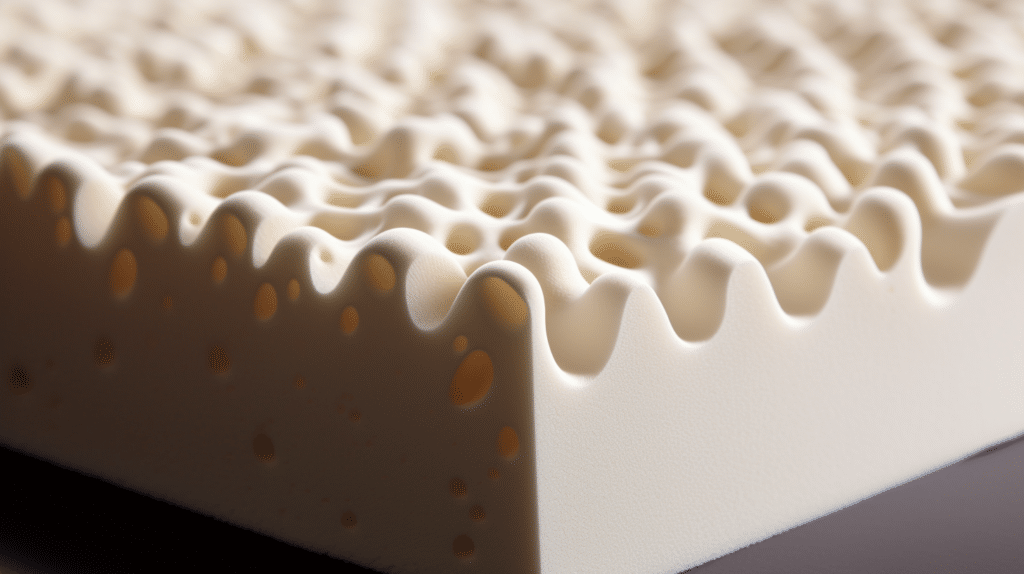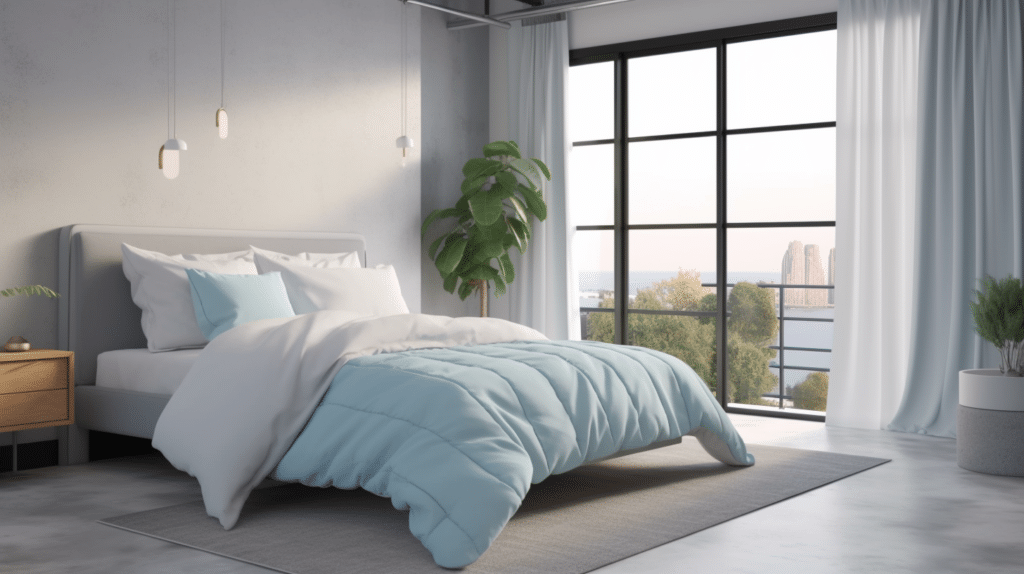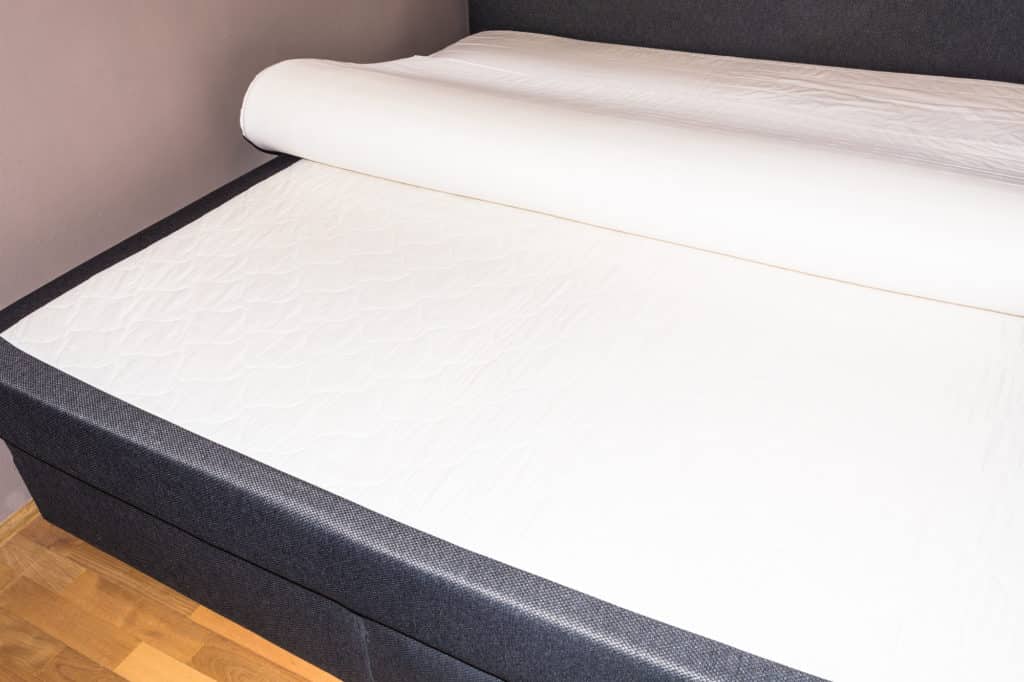Are you tired of tossing and turning all night, struggling to find a comfortable position in your bed? One of the most important factors in achieving a good night’s sleep is having the right bedding. And when it comes to choosing bed sheets, there are a lot of factors to consider – from thread counts to fabric types, weaves, sizing, and more.
In this article, we’ll guide you through everything you need to know about selecting the perfect bed sheets for your needs. We’ll start by explaining what thread counts really mean and how they impact the comfort level of your sheets. Then we’ll explore different fabric options and their unique properties. We’ll also dive into weave types and how they can affect both the feel and durability of your bedding. Finally, we’ll share tips for sizing and caring for your sheets so that they last as long as possible. Whether you’re looking for eco-friendly options or budget-friendly choices, we’ve got you covered!
The Importance of Comfortable Bedding
You’ll never want to leave your bed when you have comfortable bedding that feels like a cozy hug. But did you know that the importance of quality sleep goes beyond just feeling rested in the morning? It’s been proven that a good night’s rest can improve your overall health and well-being. And one key factor to achieving quality sleep is having comfortable bedding.
Not only can comfortable bedding help regulate your body temperature and reduce discomfort from pressure points, but it can also alleviate stress and anxiety. The softness of the fabric against your skin can create a calming effect, helping you fall asleep faster and stay asleep longer. By investing in high-quality sheets and pillows, you’re investing in your own health.
So don’t skimp on the importance of comfortable bedding. Opt for materials like cotton or bamboo for their breathability, or try out different thread counts to find what works best for you. Your body will thank you for it with improved mood, better cognitive function, and reduced risk of health issues like heart disease and diabetes. A good night’s sleep starts with a cozy bed – so go ahead and make yours as inviting as possible!
Understanding Thread Counts
Once you’ve determined the quality of your sheets, it’s important to understand how thread counts play a role in their overall feel and durability. Thread count refers to the number of threads woven into one square inch of fabric. The general belief is that the higher the thread count, the softer and more durable your sheets will be. However, this isn’t necessarily accurate.
Thread count accuracy can be misleading as some manufacturers may use double-ply yarns or other tactics to inflate their numbers. This means that a sheet with a 1000-thread count may not actually have 1000 individual threads per square inch. Additionally, higher thread counts don’t always equate to better quality as other factors such as fiber type and weave also contribute to overall comfort and durability.
Debunking thread count myths is important when choosing bed sheets because you want to ensure that you’re getting what you pay for. Instead of solely relying on thread count, focus on finding high-quality materials like Egyptian cotton or bamboo and look for weaves such as sateen or percale which offer different textures and finishes. By understanding how these factors work together, you can choose bedding that provides both comfort and longevity.
Different Fabrics and Their Qualities
Different fabrics have unique qualities that can enhance the comfort and aesthetic of your bedding. Silk, known for its luxurious feel and sheen, is a popular choice among those who prioritize elegance. Cotton, on the other hand, is a more affordable option that offers durability and breathability.
While silk may be soft and silky to the touch, it requires more delicate care than cotton. It is prone to snagging and tearing, making it less practical for everyday use. Additionally, silk sheets may not provide enough warmth during colder seasons.
Linen is another option worth considering due to its lightweight breathability. It’s ideal for warmer climates or hot sleepers who tend to overheat at night. Linen also offers a textured look that adds visual interest to your bedding ensemble while being low maintenance and durable enough for daily use.
Weave Types and Their Impact
Exploring the various weave types and their impact on bedding can provide insight into how certain sheets may feel against your skin, allowing you to make an informed decision when selecting your preferred sheet type. Two of the most popular weaves are Percale and Sateen. Percale is a plain weave that creates a crisp and cool feeling fabric, while Sateen has a tighter weave that results in a smooth and silky texture.
When it comes to choosing between Microfiber vs. Cotton sheets, the weave is also an important factor to consider. Microfiber sheets are typically made from polyester fibers that have been tightly woven together, resulting in a soft and durable fabric that resists wrinkles and stains. On the other hand, cotton sheets come in different weaves such as percale or sateen which can affect their texture and breathability.
Ultimately, finding the right weave type for your bed sheets depends on personal preference. If you prefer a cooler-feeling sheet with more breathability, percale may be the best choice for you. If you’re looking for something smoother with more of a sheen, sateen might be more up your alley. Take time to consider what feels comfortable to you so you can sleep soundly on your chosen bedding every night.
Sizing and Fit for Your Bed
Getting the perfect fit for your bedding is essential, so let’s talk about sizing. The first step in finding the right size is to measure your bed. Bed measurements can vary depending on the type of bed you have, so make sure to measure both the length and width of your mattress. Once you have your measurements, check with the manufacturer or retailer to see what sizes are available.
When it comes to choosing sheets, comforters, or duvets, it’s important to consider how they will pair with each other. For example, if you have a thicker comforter or duvet, you may want to opt for a fitted sheet with deeper pockets that can accommodate the extra bulk. On the other hand, if you prefer a lighter weight coverlet or quilt, a standard fitted sheet may work just fine.
In addition to finding the right size for your bedding and considering how different pieces will pair together, don’t forget about personal preferences for fit and feel. Some people like their sheets snug and tight on their mattress while others prefer them looser and more relaxed. Ultimately, finding a well-fitting set of sheets is key for creating a comfortable sleep environment that meets all of your needs.
Care and Maintenance Tips
Taking care of your bedding is crucial to ensure its longevity and comfort, so let’s talk about some tips for maintaining it. When it comes to cleaning instructions, always check the label on your sheets for specific care instructions. Generally speaking, most sheets can be machine washed in cold water with a gentle detergent. Avoid using bleach or fabric softeners as they can damage the fibers and cause discoloration over time. Make sure to also wash your sheets separately from other items in order to prevent any snags or tears.
In addition to proper cleaning techniques, storage plays an important role in keeping your bedding in good condition. When storing your sheets, make sure they are completely dry before folding them up and placing them in a cool, dry place such as a linen closet or dresser drawer. Avoid storing them in plastic bags or containers as it can trap moisture and lead to mildew growth. It’s also a good idea to rotate your sheet sets every few weeks if possible so that one set doesn’t get more wear than the others.
By following these simple care and maintenance tips, you can extend the life of your bedding and keep it looking and feeling great for years to come. Remember to always read the label for specific instructions on how best to clean each set of sheets, and take care when folding and storing them away between uses. With proper upkeep, you’ll be able to enjoy a comfortable night’s sleep every time you climb into bed!
Eco-Friendly and Sustainable Options
If you want to be more environmentally conscious, you might consider opting for eco-friendly and sustainable bedding options. There are many eco-friendly alternatives available that can help reduce your carbon footprint. Organic cotton is the most popular choice when it comes to sustainable bedding options. It is grown without the use of pesticides or synthetic fertilizers, making it an excellent choice for those who are concerned about their environmental impact.
Another eco-friendly option is bamboo sheets. Bamboo is known for its softness and durability, and it is also a renewable resource that requires minimal water and no pesticides to grow. In addition, bamboo sheets are naturally hypoallergenic and antibacterial, making them a great choice for people with sensitive skin or allergies.
Lastly, linen sheets are another great sustainable option. Linen is made from flax plants which require less water than cotton plants. Not only is linen a breathable fabric that keeps you cool in the summer and warm in the winter, but it also becomes softer with each wash. Plus, linen has a natural texture that adds style to any bedroom decor. By choosing eco-friendly alternatives like organic cotton, bamboo or linen sheets as part of your bedding set-up, you can help reduce your environmental impact while still enjoying comfortable and stylish sheets every night!
Budget-Friendly Choices for Every Sleeper
You’ll be pleased to know that there are plenty of affordable bedding options available for every type of sleeper. If you’re on a budget, consider looking for sheets made from cotton/polyester blends or microfiber fabrics. These materials are often much cheaper than 100% cotton sheets but still provide comfort and softness that can rival more expensive options.
When choosing budget-friendly bed sheets, it’s also important to consider durability. Look for sheets with a higher thread count, as they tend to last longer than those with lower thread counts. Additionally, opt for darker colors that won’t show stains or signs of wear as easily as lighter shades. You may also want to avoid extremely cheap options, as they may not hold up well after multiple washes.
Despite their affordability, many budget-friendly sheet sets come in a variety of color options so you can find the perfect match for your bedroom decor. Keep in mind that some colors may fade faster than others over time, so try to choose shades that won’t clash with any other patterns or designs in your room. With these tips in mind, you can find high-quality bed sheets without breaking the bank!
Conclusion
So there you have it, tips and tricks for choosing the right bed sheets. Remember that comfort is key, so always prioritize your personal preferences when selecting bedding. Thread counts are important to consider, but don’t forget about fabrics and weave types as well. And don’t be afraid to try eco-friendly or budget-friendly options – they may surprise you with their quality.
By taking the time to properly size your sheets and care for them, you can ensure a comfortable and long-lasting set of bedding. With all of these factors in mind, you’ll be able to create the perfect sleeping environment for yourself and wake up feeling rested and refreshed every morning. Happy sleeping!


